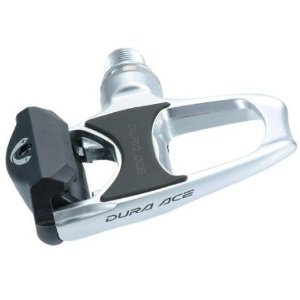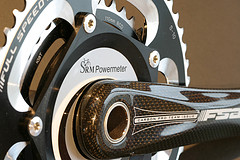Kraig Willett has made a comprehensive review of the three most used power meters: SRM, Power Tap and Polar. He explains in details how these power meters measure power output and presents results from his tests. He gives us a very detailed review of how SRM, Power Tap and Polar perform in price, performance, and durability. The review might be a bit difficult to understand for beginners, but it is really worth reading.
Here are some of the points from Kraig Willett:
On how the SRM crank system measures power output
“Instrumenting a mechanical structure allows one to convert the phenomenon of interest into an electrical signal that can be subsequently analyzed, mathematically manipulated, and then displayed to the user. Strain gages do just that in the SRM power measuring device.
The strain gages that SRM uses are nothing more than a piece of foil embedded in a plastic carrier. The resistance of the foil element changes depending on how much it is stretched/strained. The strain gages unique characteristic of changing resistance under strain is what allows the mechanical deflections that naturally occur in the structure to be converted into an electrical voltage signal.”
On accuracy of power meters
“Additionally, it can even be argued that absolute accuracy is not an issue, but rather, consistency over time or measurement repeatability is most important.”
On installing a Power Tab hub
“The Power Tap system is just about as close to ‘Plug and Play’ as one can get. The straightforward steps of installing a cassette and a tire on the wheel built with the Power Tap hub are nothing too difficult for your average bike racer. Once these steps are accomplished, one must simply drop the wheel in the dropouts and install the receiver and CPU mount with the supplied zip ties. The whole process should take 30 minutes at most.”
Read the full review of SRM, Power Tap and Polar





